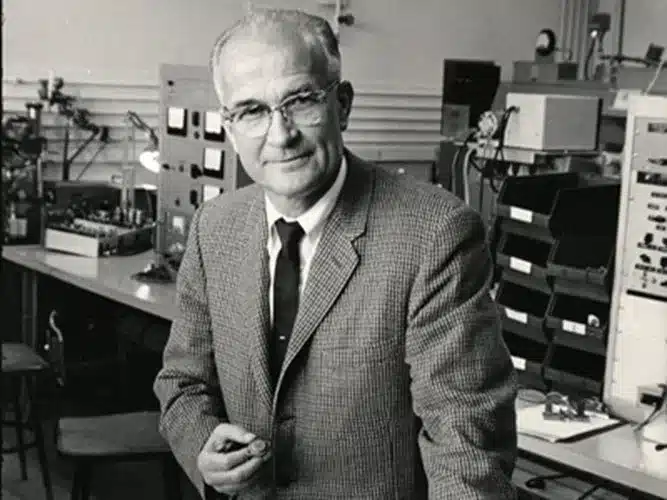William Shockley: Trailblazing the Semiconductor Revolution

William Shockley (13 February 1910 – 12 August 1989) was an American physicist and inventor. He won the Nobel Prize in Physics in 1956.
Life and Career
He was born on 13 February 1910, in London, England, UK. In 1932, he graduated from the California Institute of Technology with a Bachelor of Science. He studied under Professor J.C. Slater at the Massachusetts Institute of Technology. He wrote his thesis on sodium chloride’s energy band structure. He got his doctorate in 1936.
In 1936, he joined Bell Telephone Laboratories and started working on semiconductors, which led to the transistor’s invention and development. Shockley worked on radar at Bell Labs. He was director of research for the Antisubmarine Warfare Operations Research Group during World War II. He set up a B-29 bomber pilot training program in 1944 and took tours around the world to analyze the results.
He went back to Bell Telephone after the war and led the solid-state physics research program. As a result, he re-started working with Bardeen and Brattain on semiconductor amplifiers and controllers. They invented the point-contact transistor in 1947 and the junction transistor in 1948. He was deputy director of the Weapons Systems Evaluation Group of the Defense Department from 1954-55. In 1955, he joined Beckman Instruments. In 1956, he moved to Mountain View, California, and started the “Shockley Semiconductor Laboratory”.
In 1958 he became a lecturer at Stanford University, California. In 1963, he was promoted to the first Alexander M. Poniatoff Professor of engineering science at Stanford University. He stayed there until he retired in 1975. In 1950, he wrote Electrons and Holes in Semiconductors, a collection of his research and work. In 1962, he was appointed to the President’s Scientific Advisory Committee. He died on 12 August 1989, in Stanford, California, US.
Award and Legacy
He received the “Comstock Prize” in 1953. He was co-recipient of the Nobel Prize in physics in 1956, along with John Bardeen and Walter Brattain. He gave full credit to Brattain and Bardeen for inventing the point-contact transistor in his Nobel lecture.
Observer Voice is the one stop site for National, International news, Sports, Editor’s Choice, Art/culture contents, Quotes and much more. We also cover historical contents. Historical contents includes World History, Indian History, and what happened today. The website also covers Entertainment across the India and World.

